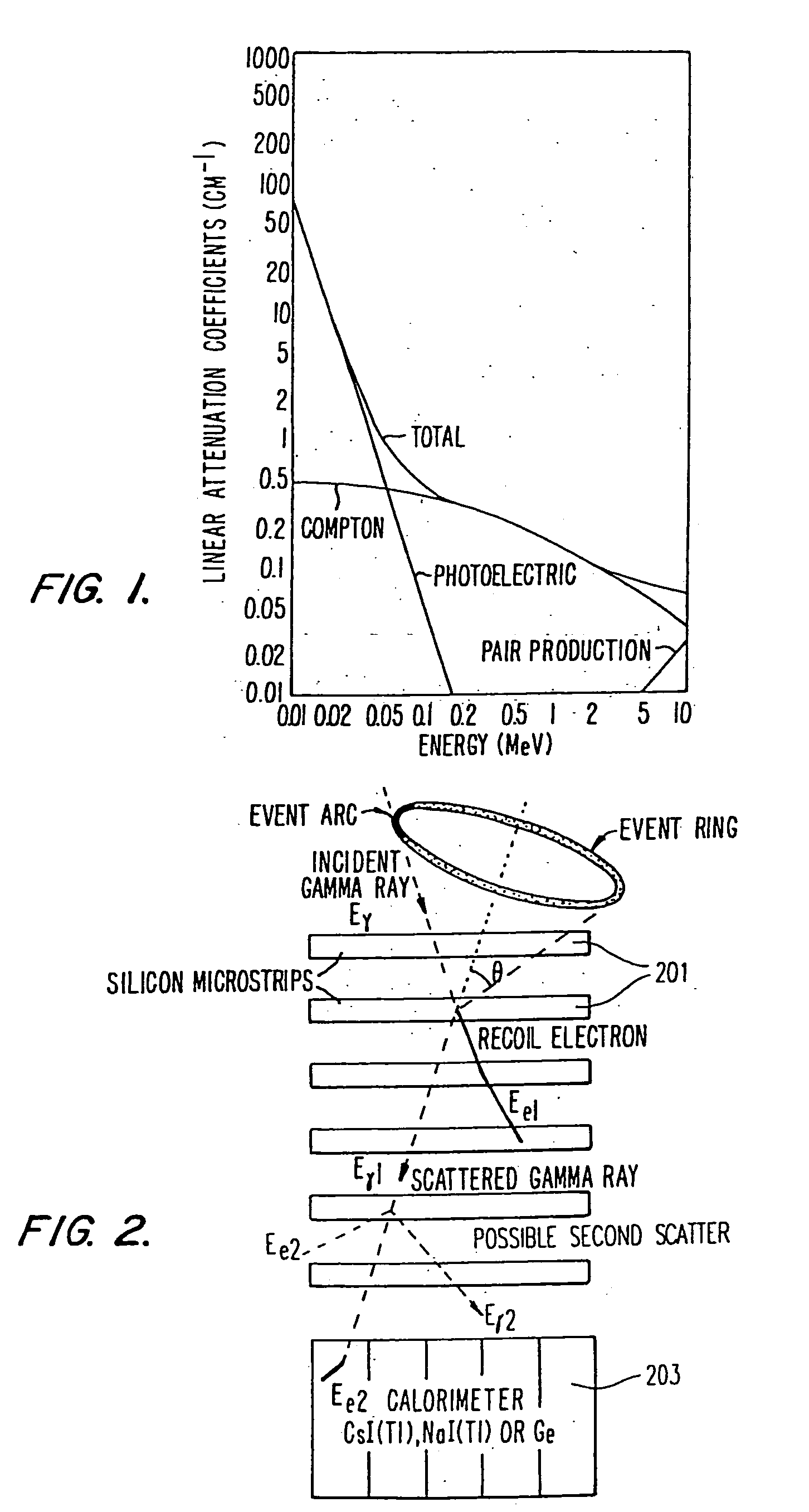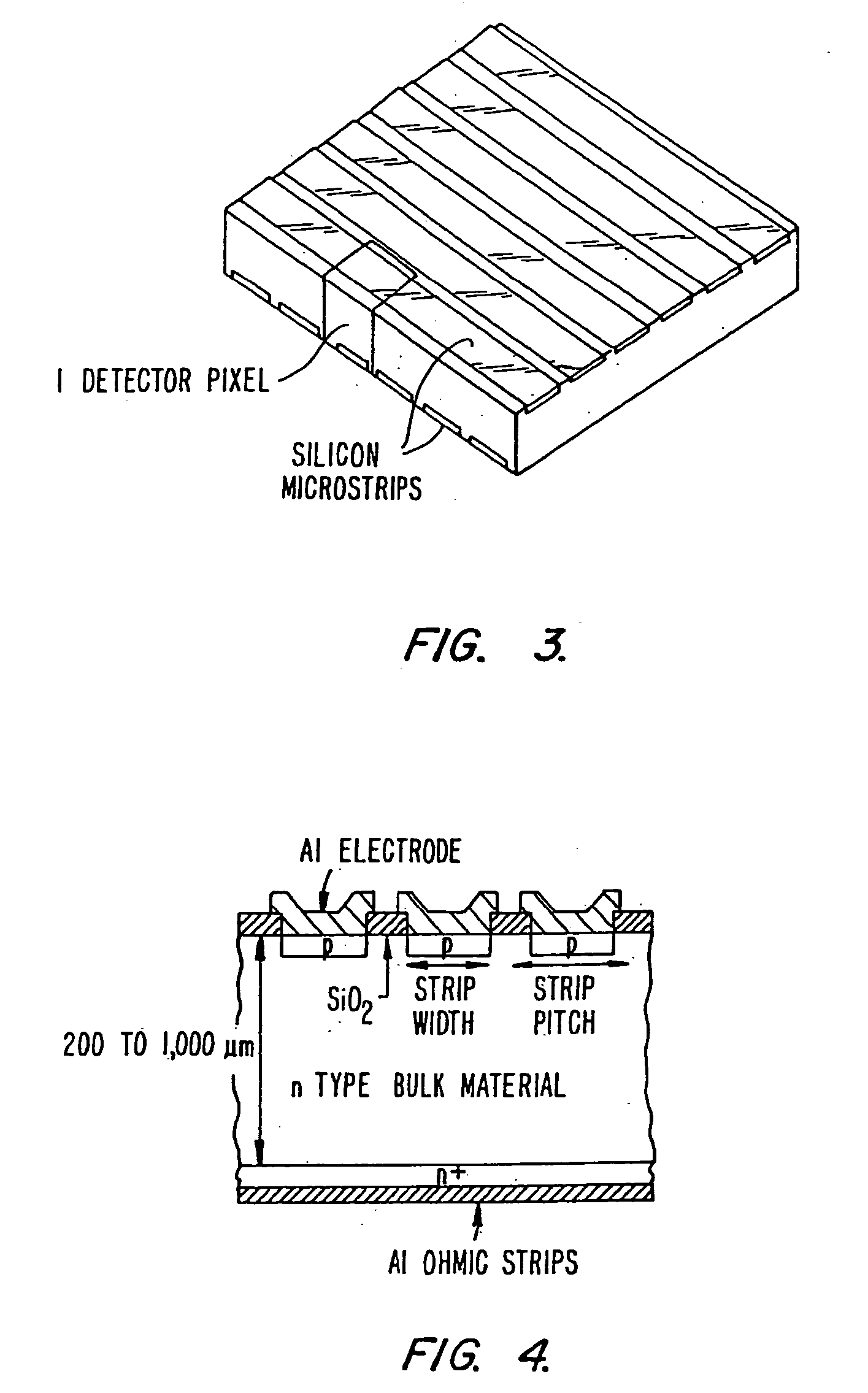Method and apparatus for gamma ray detection
a gamma ray and detection method technology, applied in the field of detection systems, can solve the problems of increasing sensitivity, reducing angular resolution somewhat, and not allowing the discrimination of scattered photon background, so as to achieve high spatial resolution, increase detector thickness, and high sensitivity
- Summary
- Abstract
- Description
- Claims
- Application Information
AI Technical Summary
Benefits of technology
Problems solved by technology
Method used
Image
Examples
Embodiment Construction
Gamma Ray Detection
[0034] The most probable interaction mechanism for 0.05 to 10 MeV gamma rays in silicon is the Compton scatter process. Therefore, the detection of gamma rays in this energy range must use Compton interaction to have maximum sensitivity. The detector must also have excellent angular and energy resolution and a wide field-of-view. The best detection technique that has all of these features is the Compton double scatter method. This technique incorporates Compton scattering, photoelectric absorption, and pair production. The three gamma ray interaction mechanisms are briefly discussed below.
[0035] Although a number of possible interaction mechanisms are known for gamma rays in matter, only three major types play an important role in radiation detection: photoelectric absorption, Compton scattering, and pair production. Of these, only the first two play a major roll in emission imaging. All of these processes lead to the partial or complete transfer of the photon ...
PUM
 Login to View More
Login to View More Abstract
Description
Claims
Application Information
 Login to View More
Login to View More - R&D
- Intellectual Property
- Life Sciences
- Materials
- Tech Scout
- Unparalleled Data Quality
- Higher Quality Content
- 60% Fewer Hallucinations
Browse by: Latest US Patents, China's latest patents, Technical Efficacy Thesaurus, Application Domain, Technology Topic, Popular Technical Reports.
© 2025 PatSnap. All rights reserved.Legal|Privacy policy|Modern Slavery Act Transparency Statement|Sitemap|About US| Contact US: help@patsnap.com



